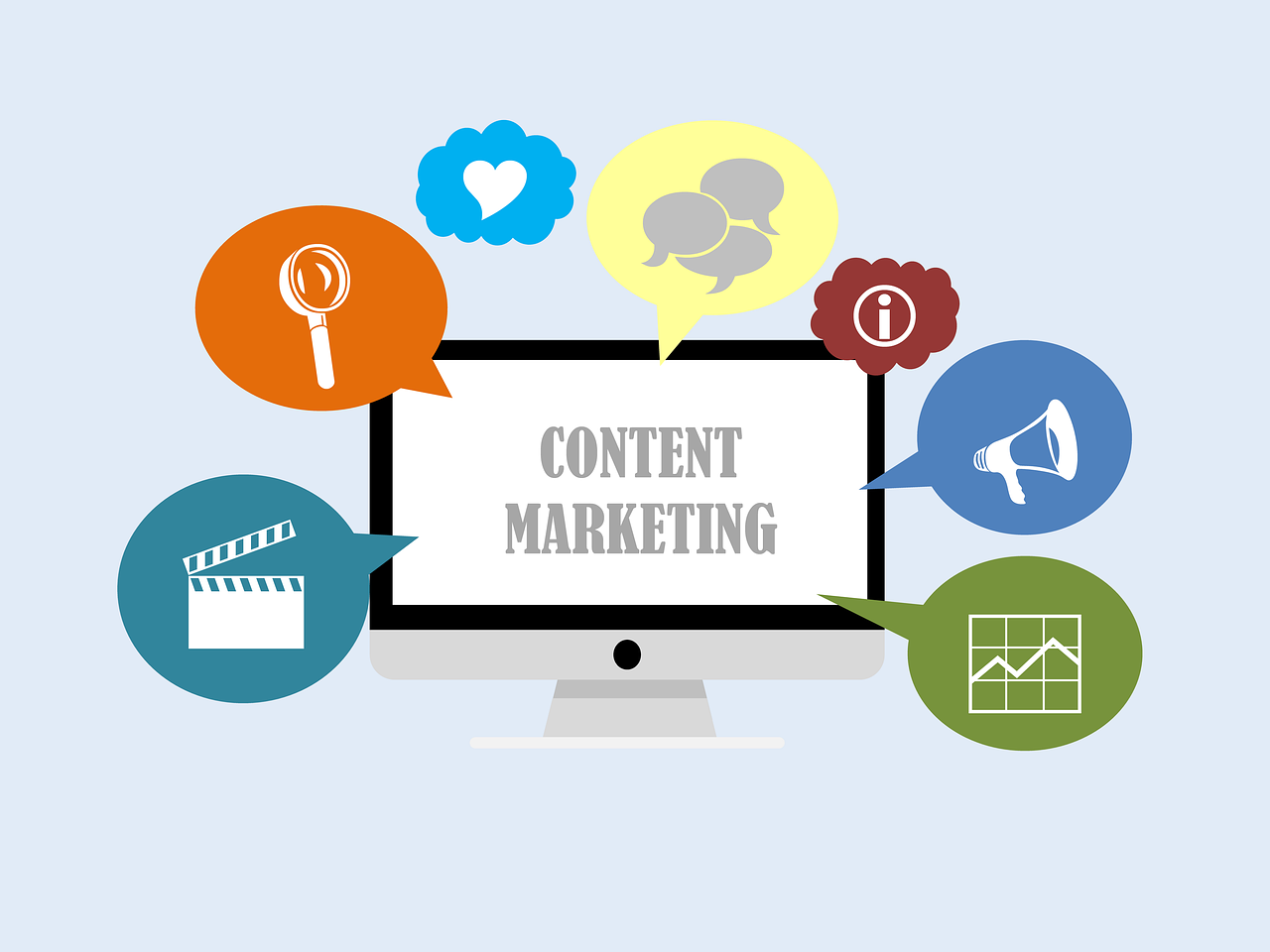In the world of digital marketing, staying ahead of the competition is key to achieving online success. To optimize your website for peak performance and unlock its full potential, embracing content marketing automation is essential. By utilizing the right tools and strategies, you can streamline your content creation and distribution process, saving time and resources, while effectively reaching your target audience. In this article, we will explore the world of content marketing automation, providing expert insights and trends to help you make the most of this powerful strategy. So, fasten your seatbelt and get ready to revolutionize your content marketing game!
Content Marketing Automation: Tools And Strategies

I. The Basics of Content Marketing Automation
Content marketing automation refers to the process of using automated tools and software to streamline and optimize the creation, distribution, and promotion of content. It involves using technology to automate repetitive tasks, streamline workflows, and improve efficiency in order to achieve better results in content marketing efforts.
A. Definition of Content Marketing Automation
Content marketing automation is the use of technology and software to automate various tasks within the content marketing process. This can include content creation, curation, distribution, promotion, and performance tracking. By automating these tasks, marketers can save time, increase productivity, and deliver targeted content to their audience more effectively.
B. Importance of Content Marketing Automation
Content marketing automation is important for several reasons. Firstly, it helps marketers save time and resources by automating repetitive tasks. This frees up time for marketers to focus on more strategic activities and creative tasks, such as content strategy development and audience engagement.
Secondly, automation allows for consistent and timely delivery of content. With automated systems in place, marketers can schedule and publish content at the most optimal times, ensuring that it reaches the target audience when they are most likely to engage with it.
Lastly, content marketing automation helps marketers scale their efforts. By automating tasks, marketers can handle larger volumes of content and reach a wider audience without sacrificing quality or efficiency.
C. Benefits of Content Marketing Automation
There are several benefits to implementing content marketing automation strategies. One of the main benefits is increased efficiency and productivity. By automating repetitive tasks, marketers can save time and streamline their workflows, allowing them to focus on higher-level strategic activities.
Automation also enables marketers to deliver personalized content at scale. With the ability to segment and target specific audience segments, marketers can provide highly relevant content that resonates with their audience, leading to higher engagement and conversion rates.
Another benefit of content marketing automation is improved data analysis and performance tracking. By using automation tools, marketers can track and analyze the performance of their content in real-time, allowing them to make data-driven decisions and optimize their strategies for better results.
D. Challenges of Content Marketing Automation
While content marketing automation offers numerous benefits, there are also challenges that marketers may face. One challenge is the learning curve associated with implementing new tools and software. Marketers must invest time in learning how to use these tools effectively and also keep up with the latest updates and features.
Another challenge is the risk of over-automation. While automation can save time and increase efficiency, it is important to strike a balance between automation and authenticity. Overreliance on automation might lead to robotic and impersonal content that fails to connect with the audience.
Furthermore, content fatigue and overexposure are potential challenges when using automation. Marketers need to ensure that their content remains fresh and relevant to avoid overwhelming their audience with repetitive or irrelevant content.
E. Key Metrics to Measure Content Marketing Automation Success
To measure the success of content marketing automation strategies, it is important to track key metrics. These metrics include:
- Conversion rates: Measure how effectively the automated content is converting leads into customers or achieving desired actions.
- Engagement metrics: Look at metrics like click-through rates, time spent on page, and social shares to gauge audience engagement.
- Lead generation: Measure the number of leads generated through automated content and assess their quality.
- Return on investment (ROI): Evaluate the financial impact of automation by comparing the costs incurred to the revenue generated.
Tracking these metrics allows marketers to evaluate the effectiveness of their content marketing automation efforts and make necessary adjustments to optimize performance.
II. Choosing the Right Automation Tools
A. Understanding Your Content Marketing Needs
Before selecting automation tools, it is essential to assess your content marketing needs. Consider factors such as the size and complexity of your content marketing operation, the specific tasks you want to automate, and the level of integration required with existing systems.
Understanding your needs will help you prioritize the features and capabilities you require, ensuring that you choose the most suitable automation tools for your business.
B. Researching and Comparing Automation Tools
Researching and comparing different automation tools is crucial to make an informed decision. Consider factors such as the tool’s user interface and ease of use, the range of features it offers, integration capabilities with other platforms, and customer reviews and ratings.
Take the time to explore demos, request trials, or attend webinars to gain hands-on experience with the tools and assess their suitability for your specific needs.
C. Key Features and Considerations in Automation Tools
When evaluating automation tools, consider the following key features and considerations:
-
Content creation and curation: Look for tools that facilitate the creation and curation of content, including features such as content templates, content suggestion engines, and integration with content creation platforms.
-
Distribution and promotion: Ensure that the tools you choose provide seamless integration with various distribution channels, such as social media platforms, email marketing software, and content management systems.
-
Personalization and segmentation: Seek tools that offer advanced personalization and segmentation capabilities, allowing you to tailor your content to specific audience segments and deliver highly relevant messaging.
-
Analytics and reporting: Look for robust analytics and reporting features that provide actionable insights into the performance of your automated content, enabling you to measure and optimize your strategies effectively.

D. Popular Content Marketing Automation Tools
There are several popular content marketing automation tools available in the market today. Some of the widely used tools include:
-
HubSpot: HubSpot offers a comprehensive suite of marketing automation tools, including content creation, distribution, and performance tracking features.
-
Marketo: Marketo provides a range of automation tools for content marketing, enabling marketers to streamline their workflows and deliver personalized content at scale.
-
Mailchimp: While primarily known for email marketing, Mailchimp also offers automation features for content creation, distribution, and performance tracking.
-
Buffer: Buffer is a social media automation tool that allows marketers to schedule, publish, and analyze their social media content effectively.
Research these tools and evaluate their features, pricing, and customer reviews to determine which tool aligns best with your specific content marketing needs.
III. Implementing Content Marketing Automation Strategies
A. Creating a Content Marketing Plan
Before implementing content marketing automation, it is essential to create a comprehensive content marketing plan. Define your goals, target audience, content themes, and key performance indicators (KPIs) that you want to track.
Your content marketing plan should also outline the specific tasks that you intend to automate and the tools you will use to automate them. This plan will serve as a roadmap for your content marketing automation efforts, ensuring that you have a clear direction and strategy in place.
B. Defining Target Audience and Buyer Personas
To effectively automate your content marketing efforts, it is crucial to define your target audience and develop detailed buyer personas. By understanding your audience’s demographics, pain points, motivations, and preferences, you can create highly targeted and relevant content that resonates with them.
Use automation tools to segment your audience based on these personas and deliver personalized content that addresses their specific needs and interests.
C. Developing Content Strategy and Editorial Calendar
Once you have identified your target audience and buyer personas, develop a content strategy and editorial calendar. Your content strategy should align with your overall marketing goals and define the topics, formats, and distribution channels for your content.
Use automation tools to schedule and automate the publishing of your content, ensuring consistent and timely delivery.
D. Automating Content Creation and Curation
Content creation and curation can be time-consuming tasks. Automation tools can help streamline these processes by providing content suggestion engines, content templates, and integration with content creation platforms.
Automated content creation and curation tools enable marketers to generate high-quality content more efficiently, freeing up time for other strategic activities.
E. Optimizing Content Distribution and Promotion
Automation tools can greatly enhance the distribution and promotion of your content. Use tools that integrate with your chosen distribution channels, such as social media platforms and email marketing software, to automate the sharing and promotion of your content.
By automating content distribution and promotion, you can ensure that your content reaches the right audience at the right time, maximizing its impact and engagement.
F. Personalization and Segmentation in Automation
Automation tools often offer advanced personalization and segmentation capabilities. Leverage these features to deliver personalized content experiences to your audience.
Use data insights to segment your audience based on their preferences, behaviors, and demographics. Then, deliver tailored content that speaks directly to each segment, increasing relevance and engagement.
IV. Tracking and Analyzing Automation Performance
A. Setting Clear Objectives and KPIs
To track the performance of your content marketing automation efforts, it is crucial to set clear objectives and key performance indicators (KPIs). Define the specific metrics you want to measure, such as conversion rates, engagement rates, and lead generation.
Setting clear objectives and KPIs will help you evaluate the effectiveness of your automation strategies and identify areas for improvement.

B. Implementing Tracking and Analytics Tools
Implement tracking and analytics tools that integrate with your automation platforms. These tools enable you to measure the performance of your automated content, track key metrics, and generate reports for analysis.
By using tracking and analytics tools, you can gain valuable insights and make data-driven decisions to optimize your automation strategies.
C. Monitoring and Analyzing Automation Performance
Regularly monitor and analyze the performance of your automated content. Look at key metrics and compare them against your objectives and KPIs.
Evaluate which content performs best, which channels drive the most engagement, and where improvements can be made. Use this data to iterate and refine your automation strategies for better results.
D. A/B Testing and Continuous Improvement
A/B testing is a powerful tool for optimizing your content marketing automation strategies. Test different variations of your content, distribution channels, and calls-to-action to identify what works best for your audience.
Continuously measure and compare the results of your A/B tests, making data-driven decisions to refine and improve your automation strategies over time.
V. Overcoming Automation Challenges and Pitfalls
A. Overreliance on Automation
One common challenge in content marketing automation is the risk of overreliance on automation. While automation can save time and increase efficiency, it is important to maintain a balance between automation and authenticity.
Remember to inject a human touch into your content and engage with your audience on a personal level. Foster genuine connections and interactions to avoid alienating your audience with robotic and impersonal content.
B. Balancing Automation and Authenticity
Authenticity is key in content marketing. While automation can be a valuable tool, it is essential to maintain the human element in your content.
Find ways to personalize and tailor your automated content to resonate with your audience. Use automation as a tool to support your authentic voice and connect with your audience on a deeper level.
C. Avoiding Content Fatigue and Overexposure
Content fatigue occurs when an audience becomes overwhelmed or disengaged due to an excessive amount of content being published. To avoid content fatigue, carefully plan your content distribution and frequency.
Use automation tools to schedule and optimize the timing of your content delivery, ensuring that your audience receives a consistent but not overwhelming stream of content.
D. Adapting to Changes in Algorithms and Trends
Algorithms and trends in content marketing are constantly evolving. It is crucial to stay updated and adaptable to these changes to ensure the continued success of your automation strategies.
Regularly monitor industry trends, algorithm updates, and changes in audience behavior. Stay flexible and agile in your approach, making necessary adjustments to your automation strategies to remain relevant and effective.
VI. Future Trends and Innovations in Content Marketing Automation
A. Artificial Intelligence and Machine Learning
The future of content marketing automation lies in the integration of artificial intelligence (AI) and machine learning (ML). These technologies will enable marketers to automate more complex tasks, such as content personalization, predictive analytics, and intelligent content automation.
By leveraging AI and ML algorithms, marketers can deliver hyper-personalized content experiences, optimize performance based on data insights, and automate content creation and curation to a greater degree.
B. Voice Search and Voice-activated Content
As voice search continues to gain popularity, content marketing automation will need to adapt to this emerging trend. Marketers will need to optimize their content for voice search and explore opportunities for voice-activated content through voice assistants and chatbots.
Automation tools that integrate voice recognition and natural language processing capabilities will play a crucial role in enabling marketers to deliver voice-optimized content experiences to their audience.
C. Integration with Chatbots and Virtual Assistants
The integration of content marketing automation with chatbots and virtual assistants presents exciting opportunities. Marketers can leverage automation tools to create interactive and personalized conversational experiences for their audience.
Through chatbots and virtual assistants, marketers can engage with users in real-time, deliver relevant content recommendations, and gather valuable data to improve the effectiveness of their automation strategies.
D. Hyper-personalization and Predictive Analytics
Automation tools will continue to evolve to enable hyper-personalization and predictive analytics. By leveraging data insights and machine learning algorithms, marketers can deliver highly personalized content experiences that are tailored to individual preferences and behaviors.
Predictive analytics will allow marketers to anticipate audience needs and preferences, enabling them to proactively deliver personalized content recommendations and drive higher engagement and conversions.
E. Enhancements in Automation Workflow and Collaboration
Automation tools will continue to evolve in terms of workflow and collaboration capabilities. Marketers will have access to enhanced project management features, streamlined approval processes, and improved collaboration tools within their automation platforms.
These enhancements will facilitate seamless teamwork and coordination amongst marketing teams, enabling them to work more efficiently and effectively in their content marketing efforts.
In conclusion, content marketing automation offers numerous benefits for marketers, including increased efficiency, improved personalization, and enhanced audience engagement. By understanding the basics of content marketing automation, choosing the right tools, implementing effective strategies, tracking performance, and anticipating future trends, marketers can leverage automation to optimize their content marketing efforts and stay ahead of the competition.




